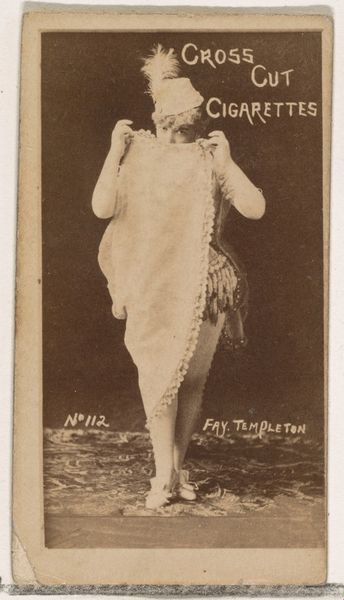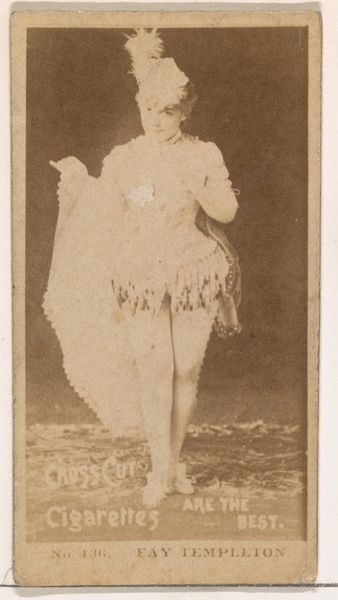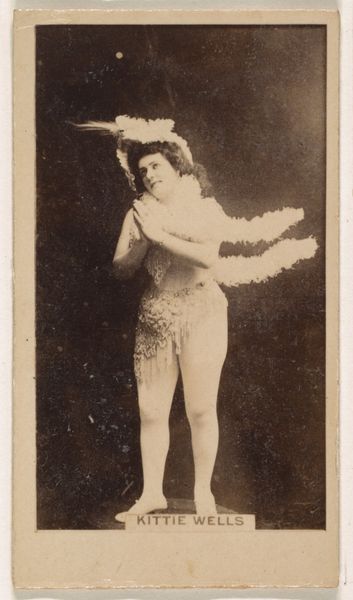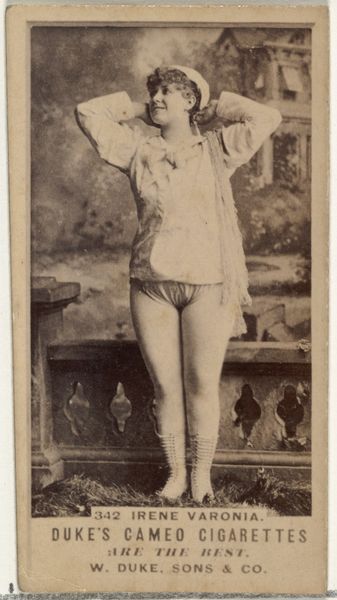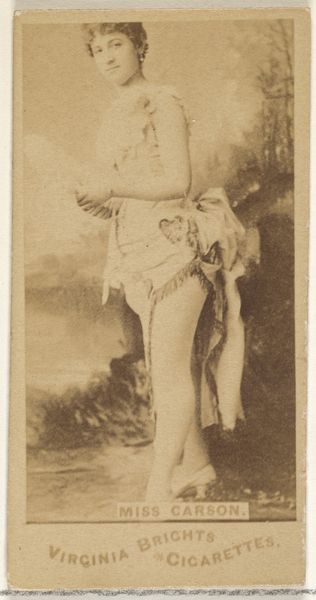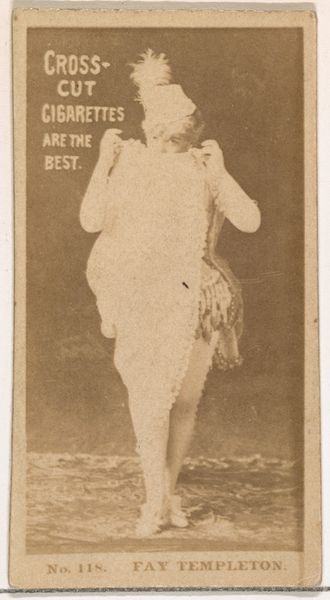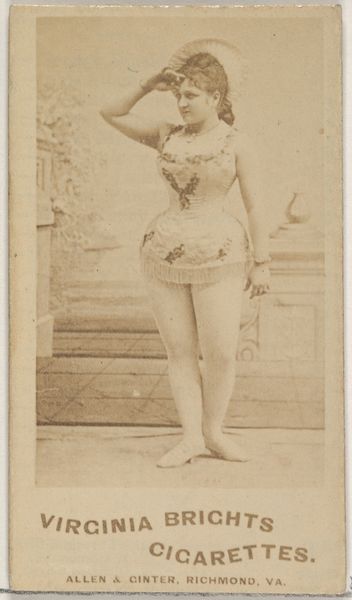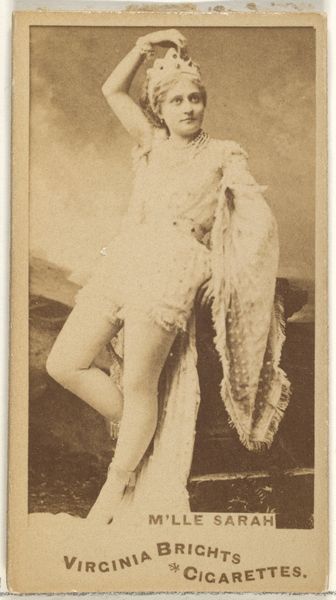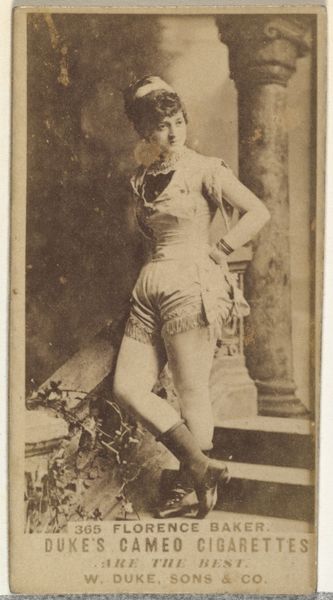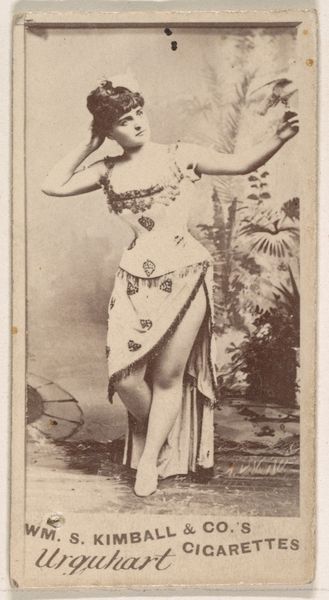
Card Number 112, Fay Templeton, from the Actors and Actresses series (N145-2) issued by Duke Sons & Co. to promote Cross Cut Cigarettes 1880s
0:00
0:00
Dimensions: Sheet: 2 5/8 × 1 7/16 in. (6.6 × 3.7 cm)
Copyright: Public Domain
Editor: This is "Card Number 112, Fay Templeton," from the Actors and Actresses series, created by W. Duke, Sons & Co. sometime in the 1880s. It's a photograph, intended as cigarette packaging. What stands out to me is the implied consumerism; how were products like these influencing popular culture? Curator: Indeed. Considering its materiality, we see this card served a dual purpose: to sell cigarettes, but also to distribute images of popular performers like Fay Templeton. How does the mass production of images like this one impact the understanding of celebrity and performance, do you think? Editor: That's interesting. It makes me think about the commodification of people and their talent. How does this type of distribution alter the value of art, performance, or even an individual? Curator: Precisely. The printing process, the paper quality, even the ink used all point to a calculated effort to engage a wider audience. These cards existed within a system of manufacturing, labor, and capital. Think about the workers producing these cards, and the consumer engaging with the performance only through a tiny material fragment. What impact did industrialization have on artistic interpretation at this time? Editor: That gives me a different way to think about the subject and purpose of a portrait. I've been looking at it from an individualistic perspective, as opposed to an industry churning out a product for profit. I didn't realize there was this other dimension, almost a collaboration between the performer, the tobacco company, and the factory workers. Curator: And, by implication, a transformation in our understanding of art production. Hopefully, you now understand it wasn’t about the artist's touch or subjective talent alone. Editor: Absolutely! This exercise showed me the value of investigating art using an interdisciplinary approach and accounting for a broader socio-economic context. Curator: I'm glad that you have understood this crucial factor.
Comments
No comments
Be the first to comment and join the conversation on the ultimate creative platform.
